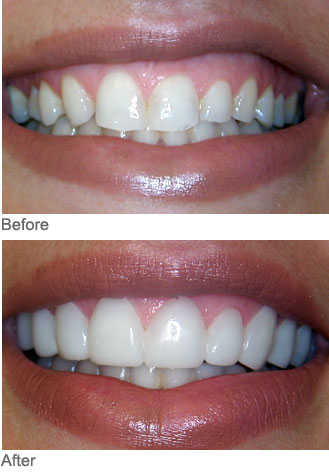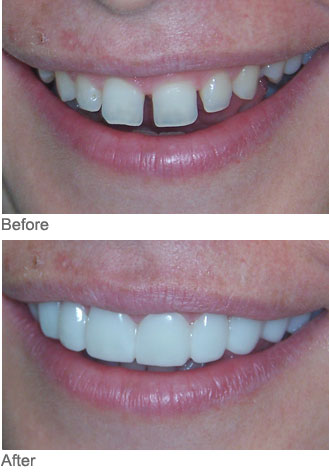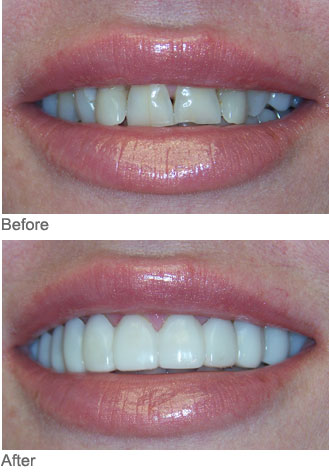
Cleaning and Prevention
Dentistry is founded on the principle of prevention. All patients are recommended biannual cleanings and examinations.
Crowns, Bridges, and Veneers
If you have a damaged or decayed tooth, our dentists can help you choose the best solution.
Dentures
Our dentists make every effort to preserve your natural teeth. However, extractions are necessary when decay has made the tooth unsalvageable or when you have an advanced periodontal disease.
Extractions
Our dentists make every effort to preserve your natural teeth. However, extractions are necessary when decay has made the tooth unsalvageable or when you have an advanced periodontal disease.
Fillings
Used to prevent the spread of tooth decay or correct any cosmetic damage, a filling is one of the ways our dentists preserve your health.
Implants
A dental implant mimics the form and function of a natural tooth, which consists of a root and a crown. The crown is the visible part of your tooth. It is used to chew food and is therefore the most susceptible to cavities.
MTM Clear Alignment
There are various ways to correct crooked or crowded teeth without the use of traditional braces.
Night and Snore Guards
Excessive jaw clenching and bruxism can accelerate tooth and jaw deterioration. Meanwhile, snoring can impact the quality of your own sleep and that of those around you.
Periodontal Maintenance
Among the causes for periodontal (gum) disease are genetic susceptibility, smoking, and other illnesses like diabetes. Periodontal maintenance involves removing plaque and tartar from above and below the gumline.
Whitening
Professional teeth whitening is faster, more effective, and longer lasting that treatments you find over the counter.

Patient Specials
Contact us about our specials and promotions.
Cleaning and Prevention
Dentistry is founded on the principle of prevention. All patients are recommended biannual cleanings and examinations. Not only do they help you quash dental problems before they arise, they leave your gums healthier, and your teeth cleaner and whiter. A professional cleaning removes hard plaque that cannot be removed by brushing and flossing alone. It also involves a fluoride treatment and polish to help protect and soothe your teeth and gums. Even if you haven’t had a cleaning in over two years, it’s never too late to treat your teeth.
What are some preventative measures I can take?
Brush with a fluoride toothpaste
Use a soft-bristled toothbrush after each meal
Floss daily before bedtime
Use an oral rinse after flossing
Avoid sugary foods, coffee, and tobacco
Crowns, Bridges, and Veneers
If you have a damaged or decayed tooth, our dentists can help you choose the best solution. Crowns and bridges are custom-fitted tooth prosthetics that function and look like natural, healthy teeth. Veneers are a less invasive alternative, but may only be a solution for those with slight tooth damage or discoloration. These thin porcelain or resin shells come in customizable colors and are bonded to the surface of your teeth.
Contact us +1 (314) 576-4462
Crowns
A crown, otherwise known as a cap, is custom-fitted to your bite and is placed over your natural tooth or dental implant. We recommend this procedure for those who have an intact tooth without root rot. The tooth may be damaged or decayed on the surface.
Procedure:
We will reduce the problematic tooth for a proper crown fit
An impression will be taken of your bite for crown fabrication
The color of porcelain prosthetics can then be customized
We will fit you with a temporary crown until the lab makes your permanent one
You will come in again for permanent crown fitting
Bridges
To replace a missing tooth that has neighboring teeth with decay and/or large fillings, or a tooth that has been missing for a long time (i.e., with gum recession around the area), we recommend bridges as opposed to dental implants.
Types of Bridges:
Traditional — Caps are bonded over teeth that lie on either side of the missing one
Cantilever — Cap is bonded over a single tooth next to the missing one
Resin-bonded — Porcelain or plastic teeth with gums that are supported by metal “wings”
Veneers
If you’re looking to cosmetically correct or enhance the appearance of one or more teeth, we suggest veneers. They are very thin, porcelain or resin shells that you can customize in color and shape. They are non-invasive and are resistant to future stains.
Common uses for veneers:
Chipped or broken teeth
Misshapen or irregular teeth
Teeth that do not respond to traditional whitening treatments
Cosmetic Dentistry
Our practice specializes in cosmetic dentistry which is dental work that improves the appearance (though not necessarily the functionality) of teeth, gums and/or bite. It primarily focuses on improvement dental aesthetics in color, position, shape, size, alignment and overall smile appearance.
Dentures
Missing teeth can make your cheeks look hollow and your mouth look sunken. More importantly, your diet can suffer. Those missing multiple teeth in a row may want to consider dentures for both cosmetic purposes and overall wellness. Depending on the amount of teeth missing, we may suggest partial or full dentures. During your consultation, we’ll assess all your options and you can choose what you feel most comfortable with.
Call us +1 (314) 576-4462
Partial
Partial dentures are ideal for those who are missing only a few teeth in a row. They latch onto the remaining gum line and any intact adjacent teeth. Even if you only have one tooth on your dental arch, a partial denture may still work best, since the remaining tooth serves as a natural anchor.
Complete
When your dental arch no longer has any teeth, a complete denture is the optimal solution. You can choose the traditional kind that latches to the gum line or choose to have dentures that are anchored by dental implants. The latter option has the best hold, but involves surgery. Our dentists can discuss all the details so you can make an informed decision.
Extractions
Our dentists make every effort to preserve your natural teeth. However, extractions are necessary when decay has made the tooth unsalvageable or when you have an advanced periodontal disease. When a tooth is malformed, damaged, impacted or ingrown, different procedures are used, but all extractions are considered surgery. Depending on which tooth is removed, we can offer you a replacement in the form of a dental implant or oral prosthetic.
Schedule an appointment +1 (314) 576-4462
Photo by Peter Kasprzyk on Unsplash
FAQ
Do I need my tooth extracted?
What should I expect during an extraction procedure?
How long is the healing process?
Call us and we will give you a consultation
Fillings
Used to prevent the spread of tooth decay or correct any cosmetic damage, a filling is just one of the ways our dentists preserve your health. Before placement, any rot must be drilled out. We offer local anesthesia along with sedation to ensure maximum comfort for our patients. There are two different types of fillings: amalgam (otherwise known as silver fillings) and composite resin, the color of which can be customized to match your natural teeth.
Call us +1 (314) 576-4462
Amalgam
Made up of silver, copper, mercury, and tin, amalgam fillings are the most durable and economical option for our patients. They last up to ten years and are less likely to fall out or break. Commonly used for filling in molar cavities, amalgam fillings can withstand biting pressure and can be fully administered in a single visit. Despite the mercury content, these silver fillings are perfectly safe for anyone aged six and up.
Composite Resin
Since the color of a composite resin filling can be customized, it is the most aesthetically pleasing option. However, it is more expensive and not as strong as an amalgam filling. Composite resin is ideal for repairing chipped or cracked teeth, filling in a tooth gap, correcting dental discoloration, protecting any exposed tooth root from gum recession, or changing the shape of teeth. Patients may also choose composite resin for cavity fillings as they are bonded to the teeth in layers and therefore require less drilling away of the natural tooth.
Periodontal Maintenance
Among the causes for periodontal (gum) disease are genetic susceptibility, smoking, and other illnesses like diabetes. Periodontal maintenance involves removing plaque and tartar from above and below the gum line. Most gum diseases are preventable with proper oral hygiene. However, what can start out as gingivitis (inflamed or bleeding gums) can quickly turn into periodontitis. In such cases, gums pull away from the tooth to create “pockets,” thereby exposing a dental root to infection. It can also lead to prolonged bad breath, loose teeth, painful chewing and other complications.
Schedule an appointment +1 (314) 576-4462
Diagnosing Gum Disease
Contact us for a consultation.
Whitening
Professional teeth whitening is faster, more effective, and longer lasting that treatments you find over the counter. As we age, our teeth darken over time. We can brighten your teeth by five to ten shades in a single session, but maintaining good oral hygiene and steering away from certain foods and beverages will help keep any future whitening services to a minimum. We may also prescribe some medication for you to use at home that helps the whitening process.
Schedule an appointment +1 (314) 576-4462
Photo by Isabela Kronemberger on Unsplash
In-office Whitening
We have one hour whitening! It will change the way you feel about smiling. We are regularly offering discounts on it, so ask about it! Treat yourself or someone you love for that confident smile they deserve. You spend one hour watching a TV show!
Procedure:
Thorough cleansing and polishing of teeth
Application of gum protectant
Application of whitening agent
Whitening agent is laser-activated
Whitening agent is left on teeth for several minutes
Teeth and gums are rinsed
Post-procedure Care
Contact us for best practices.
Things to avoid:
Tobacco products
Coffee and tea
Red wine
Food coloring
Any bright-colored drinks
Night and Snore Guards
Excessive jaw clenching and bruxism can accelerate tooth and jaw deterioration. Meanwhile, snoring can impact the quality of your own sleep and that of those around you. To help our patients most comfortably avoid this, we customize snore and night guards to their bite. One type of night guard acts as a cushion between the top and bottom dental arches while the other creates more space between the front teeth to prevent the top and lower jaw from touching. Snore prevention mouth pieces look similar, but instead of acting as a cushion or spacer, they keep the lower jaw forward, thereby preventing pressure on the larynx.
Schedule an appointment +1 (314) 576-4462
What are the causes of teeth grinding?
Stress or anxiety
Obstructive sleep apnea
Certain medications or recreational drugs
What are the causes of snoring?
Sleeping on your back
When the larynx is compressed by a relaxed jaw
Large tonsils or a long soft palate
Dental Implants
Common Implant Procedures:
What is a dental implant?
A dental implant is a small titanium screw that serves as the replacement for the root portion of a missing natural tooth. Dental implants can be placed in either the upper or lower jaws. Due to the biocompatible properties of titanium, a dental implant fuses with the bone and becomes a good anchor for the replacement tooth. Dental implants can be used in solutions for replacing single or multiple missing teeth.
Why dental implants?
There are a number of reasons why you should consider a dental implant: Without the root structure of a natural tooth present, the jawbone can shrink. This shrinkage will make your face look older than it is. There are no loose parts to worry about losing. The dental implant is stable and comfortable. No adjustment is needed after placement. Normally, it will serve its owner for life.
How much do dental implants cost?
The fee for tooth replacement with dental implants depends on several factors, including the number of teeth being replaced and the number of dental implants required to support your replacement teeth. Some additional procedures may be required prior to the placement of your dental implants to ensure the long-term health of your dental implants. To obtain a specific fee estimate, it is necessary to have a doctor examine your mouth. After a thorough diagnostic examination, your dentist will recommend the treatment that is best for you.
Who is a Candidate?
Anyone who is missing one or more teeth due to injury, disease or tooth decay may be a candidate for dental implants. The determining factor is the amount of available bone. Your dentist is the best person to evaluate whether dental implants are a viable solution for you.
Is old age a problem?
Occasionally, older patients express concern that their age may prevent them from enjoying the benefits of dental implants. Health is more of a determining factor than age, If you’re healthy enough to have a tooth extracted, you’re probably healthy enough to receive dental implants. Certain chronic diseases may contraindicate dental implant treatment. Your dentist will determine if your a candidate for dental implants after careful evaluation of your dental & health history.
What are the advantages of dental implants over dentures or a dental bridge?
Improved appearance: When you lose the entire tooth - crown and root - shrinkage of the jawbone may cause your face to look older. Dental implants can stop this process. A traditional denture or dental bridge doesn’t.
Preserve natural teeth: With traditional dental bridges, teeth adjacent to missing teeth are normally ground down to be used as anchors for a dental bridge. Dental implants often eliminate the need to modify healthy teeth.
Permanent solution: There are no loose parts to worry about losing. The dental implant is stable and comfortable. No adjustment is need after placement. Normally, it will serve its owner for life.
How will dental implants affect my life?
Dental implant-supported replacement teeth look, feel and function like natural teeth. This means that you can eat and drink whatever you choose. But most importantly, dental implants often improve quality of life in a very concrete way. People who have felt embarrassed and worried because of their tooth problems are often overwhelmed by what new permanent teeth can do for their self-esteem.
Will my new teeth look natural?
When dental implants are used in combination with modern restorative dentistry, their appearance, comfort and function are very likely to exceed your expectations. Often they are hard to tell apart from your natural teeth.
Will I be able to chew with the same force and pressure I use with my natural teeth?
Yes. Following a brief adaptation period, chewing capacity is comparable to that of natural teeth.
How much time is required for a dental implant placement?
Today, state-of-the-art guided surgical techniques are convenient alternatives to place dental implants and allow you to have the dental implant placed in a single session using keyhole surgery. This new method has significantly simplified the procedure, for both patients and dentists. The major advantage of the guided surgical technique is the minimal amount of manipulation of the soft tissue due to keyhole surgery. This significantly reduces the healing time and the discomfort normally associated with traditional dental implant surgical techniques.
The conventional process can take from three to six months. First, the dentist places the dental implant, which is left for three to six months to heal and integrate with the jawbone. During the healing period, your are given a temporary prosthesis until the permanent crown is put in place.
The procedure chosen depends on several factors, such as your dental health, the number of teeth involved and which teeth are replaced. These factors will also determine the total number of visits to the dentist throughout the treatment period.
Is the treatment painful?
With any surgery, there can be some discomfort. Placing one implant normally causes less discomfort then placing several. Anesthesia and patient sedation are commonly administered to help reduce any discomfort during the dental implant process. Most patients report that they were much more comfortable following the procedure than they had anticipated. Your doctor will prescribe medications to ease any discomfort that may occur. Ask your dentist to recommend another patient who has already had tooth replacement therapy to assess their personal experience.
How will I feel after the treatment?
It is normal to have some bruising and swelling in the gum and soft tissues. But usually the discomfort, if any, is treated with an ordinary painkiller. You should expect to be able to work the next day.
How will I care for my dental implants?
Your new teeth must be cared for and checked regularly, just like your natural teeth. Brush and floss as recommended by your dentist or dental hygienist. See your dentist in six months, or more frequently if so advised.
new* procedures- guided surgery for implants and
Plan mecca technology
Guided surgery for implants
NobelGuide is a complete treatment concept for diagnostics, treatment planning and guided implant surgery – from a single missing tooth to an edentulous jaw. It helps you diagnose, plan the treatment and place your implants based on restorative needs and surgical requirements.
Guided implant surgery is the process of planning the implant surgery on a computer using the patient’s CT image. The conventional method of using the patient’s panoramic x-ray to plan implant surgery cannot transfer the planning exactly as planned, however, guided implant surgery can transfer the plan as exactly as the doctor plans on the computer. To carry out the surgery exactly as the surgery plan, a custom surgical template and guided implant surgery kit are needed.
New* procedure -plan mecca technology
E4D Digital Machine that does same day crowns.
Lumineers
LUMINEERS® are an excellent option for people who are unhappy with the cosmetic appearance of their teeth. These ultra-thin porcelain slips fit perfectly over the teeth making them look cosmetically perfect, white and completely beautiful. An off-white or crooked smile can cause serious confidence problems. LUMINEERS® are a fantastic alternative for patients wanting a beautiful smile without surgery, harsh chemicals or painful treatments.
For LUMINEERS® to be applied, the underlying teeth, bone and gums must be healthy. Patients with gum disease or tooth decay must be treated prior to LUMINEERS® placement. Unlike dental veneers, LUMINEERS® can be left in place for over 20 years or removed upon request to expose the intact original teeth. LUMINEERS® can be fitted in just two appointments, and instantly add pizzazz to the smile.
Here are some of the problems that LUMINEERS® can solve:
Large gaps between the teeth.
Misaligned teeth.
Misshapen teeth.
Stained teeth.
Uneven gums and teeth.
Unnatural looking bridges and crowns.
How can LUMINEERS® benefit me?
LUMINEERS® provide a wide range of advantages over similar treatments. The most meaningful advantage to anxious patients is that no painful alterations of the teeth are required prior to the LUMINEERS® application. The covers themselves are so thin and unobtrusive that speech and eating are seldom affected.
Here are some of the other advantages of LUMINEERS®:
Last over 20 years.
No harsh drilling of inner tooth mechanisms.
No injections.
No pain or discomfort.
Only two dental visits required.
Option to place multiple LUMINEERS® at one time.
Perfect, pearly-white teeth.
Thickness of a contact lens.
Totally reversible treatment.
Are LUMINEERS® strong enough?
LUMINEERS® are constructed from Cerinate® porcelain, which is known for its exceptional strength. Even though LUMINEERS® are thinner than dental veneers, they are less likely to break or chip. Additionally, Cerinate® porcelain can be color-modified and balanced. This means that different levels of opaqueness and translucency can be utilized.
How are LUMINEERS® applied to the teeth?
One of the main reasons LUMINEERS® are so easy to fit is that little etching has to be done beforehand. With veneers, many teeth might have to be permanently altered or drilled to ensure the best fit. However, LUMINEERS® offer a beautiful end product without any drilling, anesthesia or extensive etching. This factor alone can reduce the time in the dental chair by almost half, when compared to traditional veneers.
During the initial visit, bite impressions and X-rays are taken to determine the exact way the teeth fit together. The dentist also thoroughly examines the teeth to ensure that no tooth decay and no signs of gum disease are present. Together, the dentist and patient choose the color of the LUMINEERS® and the desired level of transparency. The bite impressions are sent to the laboratory to be custom-crafted.
The LUMINEERS® are bonded to the teeth at the second appointment. If bonding substance has oozed out from beneath the LUMINEERS®, this is carefully removed using a beveled featheredge margin. Once the LUMINEERS® are in place, the dentist polishes them until they are completely smooth. The advantage of this smoothness is that bacteria and staining agents cannot easily adhere to the surface of the LUMINEERS®.
The LUMINEERS® are finally separated. Up until this point, they are still attached where the bite impressions suggest teeth would naturally join. The treatment is finished, leaving a beautiful white smile, and perfect, healthy teeth.
If you have questions or concerns about LUMINEERS®, please ask your dentist.
Laser Dentistry
In recent years, laser dentistry has superseded many traditional dentistry practices, making treatments more precise and less painful. This newer style of dentistry utilizes intense beams of light projected by a dental laser. Dental lasers can be used to perform a wide variety of treatments, including soft tissue shaping and removal.
The FDA deemed laser dentistry to be safe for public usage in 1990. Since then, many dentists have incorporated dental lasers into everyday procedures – reducing bleeding, anxiety and post-treatment recovery times. The beauty of dental lasers is that they damage far less of the surrounding tissue than traditional techniques – which means less discomfort and pain.
Here are some of the other benefits associated with laser dentistry:
Faster healing and tissue regeneration.
Preservation of more of the natural tooth.
Reduced bleeding during and after treatment.
Reduced need for anesthesia.
Reduced need for stitches and sutures.
Reduced risk of bacterial infections after procedures.
How can laser dentistry help me?
Laser dentistry is incredibly versatile and plays an important role in a growing number of common dental procedures. Though laser dentistry is most notably associated with cosmetic treatments, it is equally effective for preventative purposes.
Here are some of the ways that dental lasers can be used:
Tooth preparation – Prior to laser dentistry, a drill would be required to prepare the tooth for a filling. Lasers can now completely eliminate the need for drilling and anesthesia. Lasers also successfully kill oral bacteria around the surgical site.
Reshaping soft tissue – Dental lasers can dissolve soft tissue to expose more of the natural tooth (crown lengthening), reshape soft tissue to make “gummy smiles” more attractive, and remove uncomfortable soft tissue folds caused by denture wear.
Frenectomy – Lasers can improve speech and the feeding habits of babies, children and adults by untying the tongue.
Tumor removal – When benign tumors have formed in the soft tissue areas of the mouth, a dental laser can completely remove them without causing pain.
Whitening – Lasers can greatly expedite the tooth whitening process by increasing the activity of the particles in the peroxide bleaching solution.
Biopsy – Lasers are sometimes used to perform a biopsy on suspicious areas of soft tissue. This biopsy procedure can be performed instantly and with great precision.
How are laser procedures performed?
Different types of dental laser have been created to treat different conditions. Each laser uses a different wavelength of light, which predicates its best use. The most common types of dental laser are carbon dioxide lasers and diode lasers, which are usually employed to treat soft tissue problems. The dentist will decide which type of laser is best to use after conducting X-rays and a thorough examination.
The laser beam is extremely bright, and special glasses will be provided to protect the eyes. The dentist will then direct the beam at the affected area and carefully dissolve the soft tissue, harden the filling or whiten the teeth.
The procedure will take far less time than conventional methods, and cause far less anxiety and discomfort. The only real disadvantage of laser dentistry is that it can prove to be more expensive.
If you have questions or concerns about laser dentistry, please ask your dentist.
MTM Clear Alignment Therapy
Contact us about Clear Alignment Therapy
For patients who need bite alignment, but who wish to avoid the unattractive appearance metal braces, we can provide an alternative. ClearCorrect, the invisible alignment therapy system, allows patients to bring their bites into line without the unsightly metal wires and brackets.
The ClearCorrect system uses a set of clear plastic aligners that patients can easily remove during meals or their daily dental care routines. We examine the teeth for flaws, mold bite impressions and take X-rays. The dentist sends the data to ClearCorrect, where they develop a series of aligners to bring the patient’s bite into alignment.
ClearCorrect uses advanced technology to create 3D models of the patient’s teeth. The ClearCorrect system tracks how each aligner will straighten the patient’s bite, step by step, until the patient sees the desired results. Each aligner is generated by a 3D printer from the computer models, which ensures that the aligners will fit perfectly during each phase of the process.
Over the weeks and months, the dentist will examine the patient and assess the alignment process. Every six weeks, the patient will receive a new set of two aligners. The patient wears the first aligner for three weeks, then switches to the second. The patient must wear the aligners for at least 22 hours a day to ensure proper alignment.
The ClearCorrect system has several advantages over traditional braces. The fitting procedure is much less invasive than that for metal braces, which also makes the aligners much more comfortable to wear. The clear aligners allow patients to maintain their normal routines and smile as they please. Since the aligners are removable, the patient does not need to worry about food particles adhering to them.
Snap-On Smile™
is a thin, specialized resin material that snaps over your actual teeth and can be removed like any dental appliance.
Snap-On Smile™ can be made as thin as .5mm without compromising strength. Its simple patented design allows you to eat without any impingement into the gums. What's more, you can choose from 23 color shades and 18 smile designs!
Looking for a celebrity smile, but don't have a red carpet budget?
Snap-On Smile™ is an affordable cosmetic alternative to permanent dental work — priced at a fraction of the cost of a full set of porcelain veneers. In fact, you can have a beautiful smile for the cost of one crown.
Snap-On Smile™ provides a viable restorative option for all patients — particularly those who are dental phobic, financially challenged, or medically compromised. You can even use one to preview extensive dental treatment.
After your consultation, your dentist will take an upper and lower impression. Then, you and your dentist choose the preferred shape and shade. Lastly, your case is sent to Snap-On Smile™ Creations Laboratories for fabrication and within 7-10 days, your beautiful smile is ready to wear.
Snap-On Smile It's as easy as 1 - 2 - 3
1. An accurate impression, as well as a bite registration, is taken of the arch or arches that are to receive the Snap-On Smile™ appliance. Polyvinyl siloxane or poly-ethers are the preferred impression materials.
2. The patient and doctor choose the shade and shape. The Smile Style Guide is used to help patients select their shape. Photos aid the technicians in fabricating the most aesthetic result.
3. Your case is sent to the Snap-On Smile™ Creations lab and within 7-10 days your dentist will receive your case back and be prepared to take your smile from ordinary to extraordinary!
Teeth and a beautiful face!
Contact us about our beauty options: PRP and Microderm. Rejuvenate and Hydrate. Special prices for new appointments. Phone number is 314-576-4462 and email is randahawatmehdmd@gmail.com











